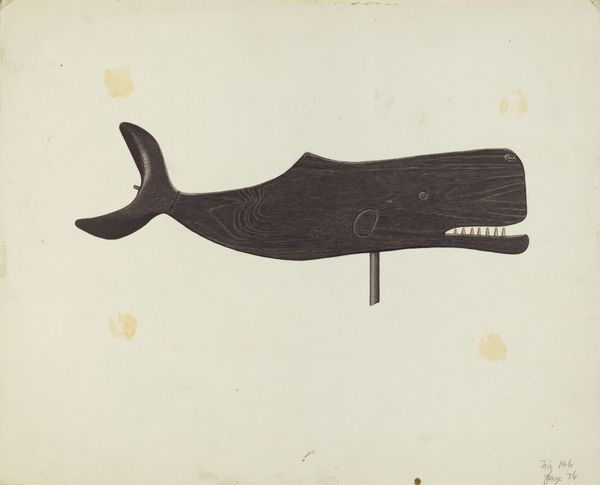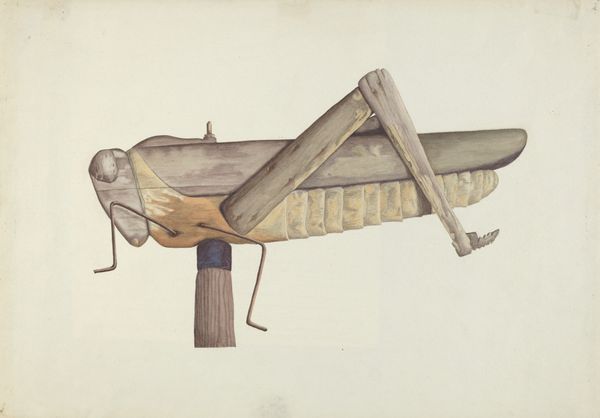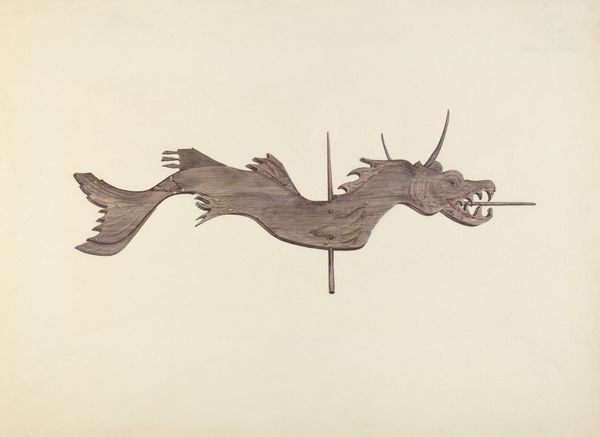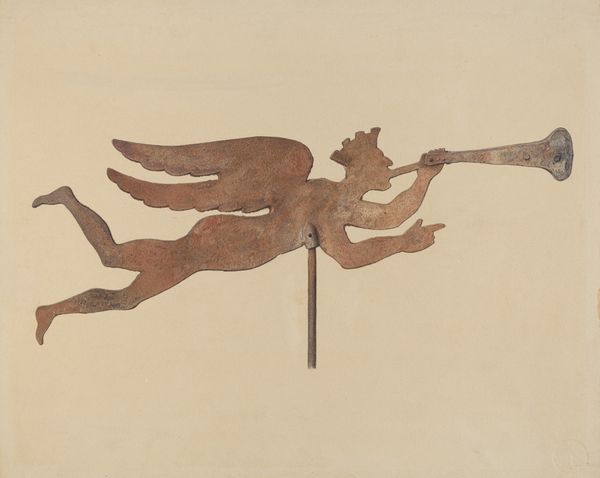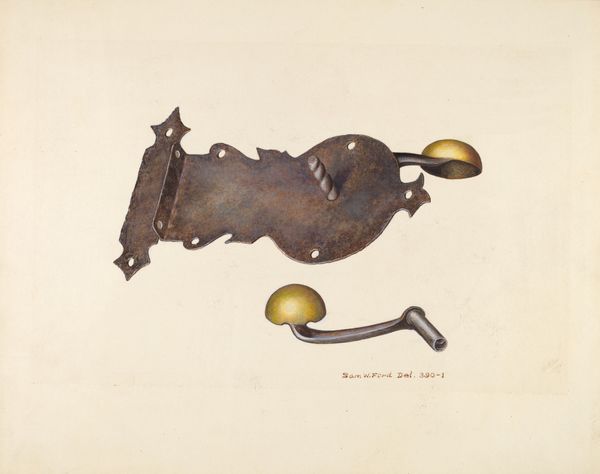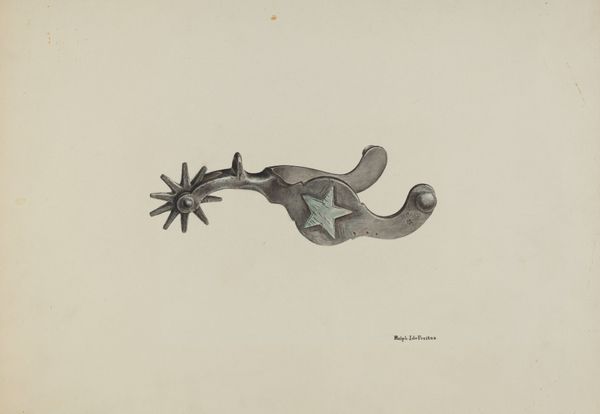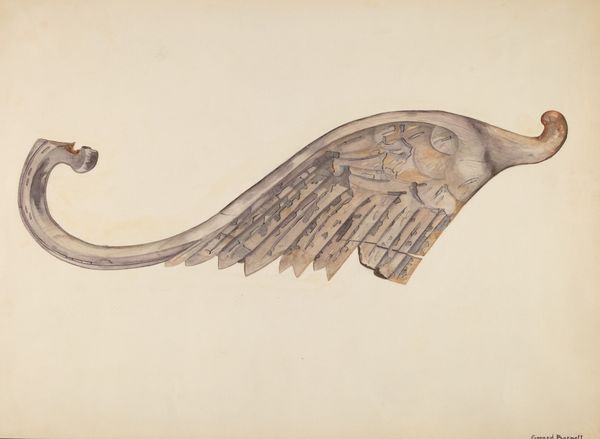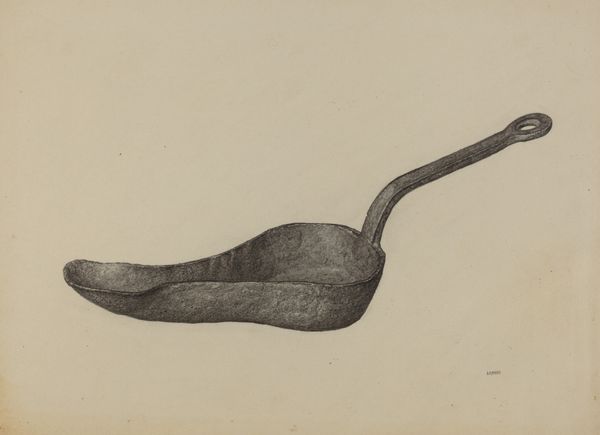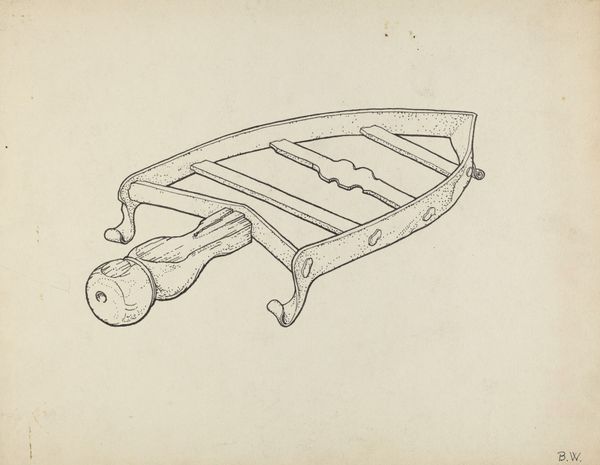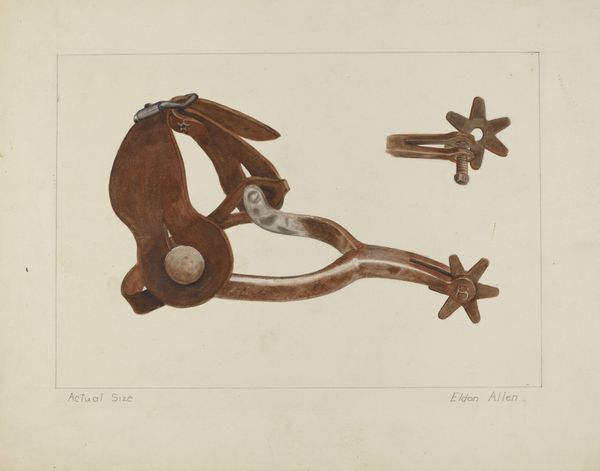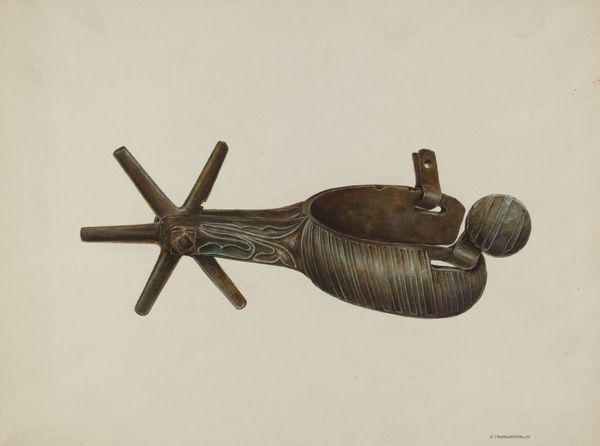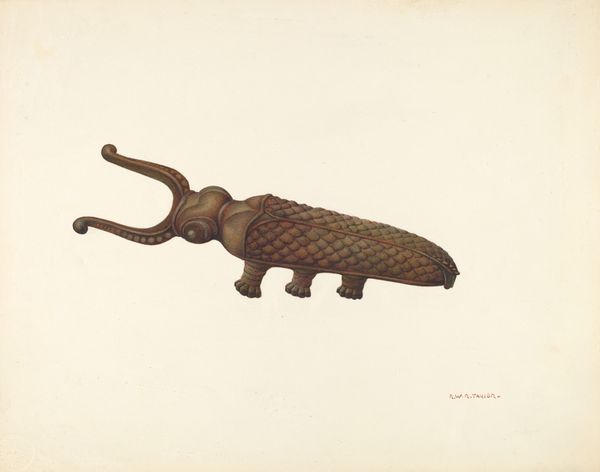
drawing, wood
#
drawing
#
landscape
#
form
#
geometric
#
line
#
wood
Dimensions: overall: 30.5 x 43.2 cm (12 x 17 in.) Original IAD Object: 12" long; 5 1/2" high
Copyright: National Gallery of Art: CC0 1.0
Curator: Look at this fascinating study by Marian Page. It's called "Whale Weather Vane," made around 1938. It seems to be a study for a wooden sculpture. Editor: My first thought is of playful pragmatism! I mean, it's so simple and geometric, yet… something about the grayness makes it almost melancholic. What's it made from, charcoal? Curator: Well, it seems Page captured a three-dimensional weather vane through the graphic economy of drawing and in doing so accentuated its symbolic resonance: Whale as mariner’s guide and mythical behemoth of the deep, directional diviner of unseen forces. There’s a connection to the past, but also… something modern, almost streamlined. Editor: Absolutely! The stylized whale tail feels so… deco! All right angles where you least expect them. Though it is rather spare for that aesthetic. Curator: I think you nailed something. Think about what weather vanes do: indicate change and direction. Page made this on the precipice of World War II. She shows us more than a wind catcher; she has a geometric premonition. Editor: The dark tone against the empty field creates a dramatic mood of its own—I can't stop picturing ominous storm clouds in the distance. And now knowing the time, I cannot unsee that sense of premonition that you mentioned, such great perspective! Curator: These familiar symbols contain histories within histories. The way forms repeat, transmute themselves – these tell us about what persists across time, both visible and submerged. This Whale Weathervane—this humble drawing and prospective design—serves as an understated echo. Editor: So much to take away from a drawing so…quiet. And yet this thing feels anything BUT silent. What a stunning reminder that simplicity need not be simple-minded!
Comments
No comments
Be the first to comment and join the conversation on the ultimate creative platform.
